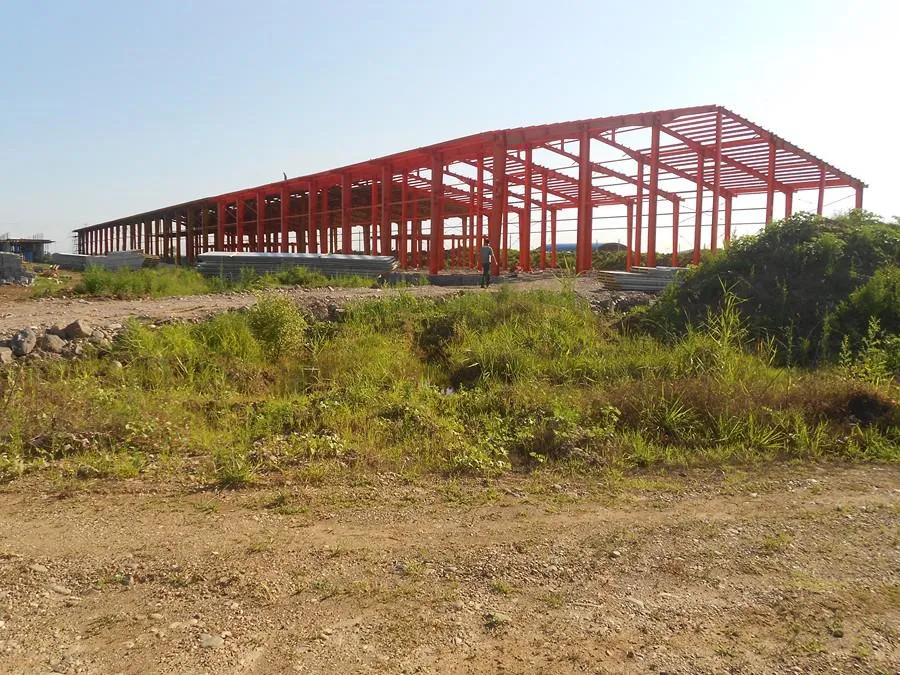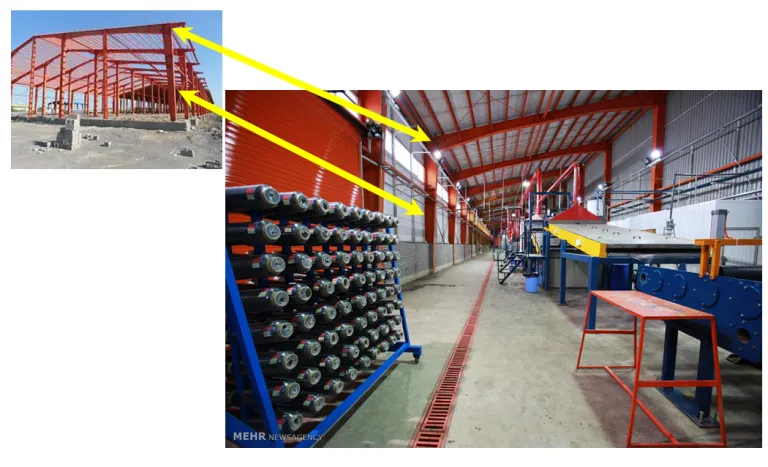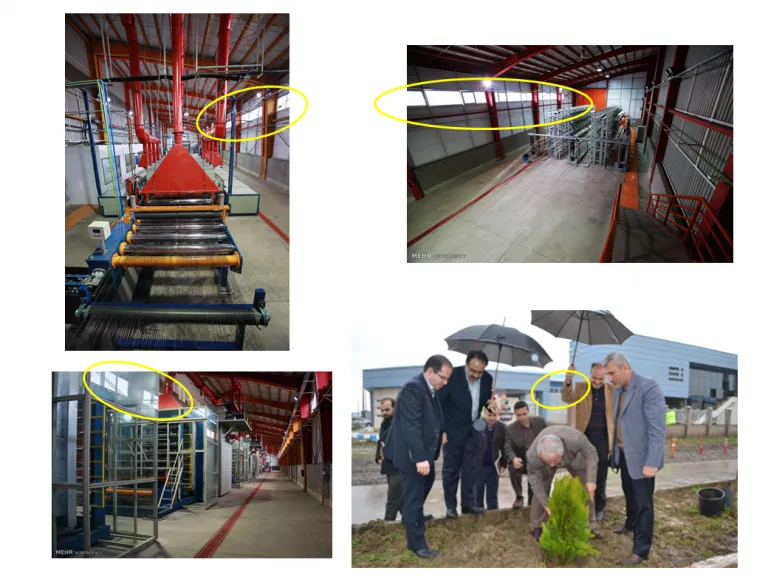29 March 2015
Iran's carbon fibre facility located? A case study in open source techniques
Key points: – Last week, Iran’s Defence Minister inaugrated a new carbon fibre manufacturing facility, said to be the country’s second production plant for the material. – A building near the city of Rasht has been identified which has several signatures that match the facility shown in Iranian media footage.

On Wednesday 11 March, Iran’s Defence Minister, Hossein Dehghan, officially opened what was described by Iran’s Ministry of Defence as a ‘carbon fibre production plant’. Several interior photographs and videos were released, but the facility’s location was not provided.
In an initial assessment of the site by Project Alpha, we outlined open source evidence suggesting that the facility was located in an industrial estate near the city of Rasht. Further investigation has since identified a specific facility, located at 37°14’8.15″N, 49°32’27.67″E, which bears several hallmarks of the carbon fibre plant facility visited by Dehghan last week.
Locating this candidate site has involved a variety of open source investigative techniques. We are grateful to Dr Jeffrey Lewis, Director of the East Asia Nonproliferation Program at the James Martin Centre for Nonproliferation Studies, for his assistance.
The Sefidrud Hypothesis
Working from a previous Iranian media statement that a $500 million carbon fibre production facility was underway at the Sefidrud Industrial Estate near the city of Rasht, we hypothesised in our initial assessment that Sefidrud might be the location of the facility visited by Dehghan last week.
Several Iranian news articles have since been found referring to the carbon fibre facility at Sefidrud. Many of them describe it as being a 150 ton capacity plant – the same reported size as the facility visited by Dehghan last week.
In our initial assessment, we also noted that the US Treasury and State Department in 2013 sanctioned an Iranian firm, Navid Composite Material Company, because it was ‘currently building a carbon fibre production plant in Iran.’ Furthermore, according to the US designation text, Navid was involved in procurement for ‘a carbon fibre production line capable of producing 150 tons per year of carbon fibre.’
Using Navid and Sefidrud as Google search terms, we have located an Iranian government website that describes a visit by officials in early 2014 to various facilities at the Sefidrud Industrial Estate, including one owned by Navid Composite Material Company. The website states that Navid would be producing 150 tons of carbon fibre annually at Sefidrud.
From these multiple sources, we have assessed that Navid Composite Material Company is involved in a large carbon fibre production facility at Sefidrud near Rasht. This assessment is our leaping-off point to try and find the Navid-linked facility – which, we thought, might be the same one as that visited by Dehghan.
Searching for a candidate location
Conducting Google searches for Navid Composite Material Company yields limited results, but one is of particular interest.
An Iranian engineering and construction consulting company, BNS Group, lists Navid Composite Material Company as one of its clients. Helpfully, BNS Group provides on its website several images of an industrial building that BNS says it has completed for Navid



Comparing this building with the new carbon fibre facility
Clearly, the building that BNS provides photos of is far from finished. The carbon fibre facility visited by Dehghan, on the other hand, looked complete, or near to it. Still, though, close comparison of the BNS images with the new carbon fibre facility reveals that the two buildings share various visual signatures.
First, the colour and shape of the two buildings’ beams and girders are similar:

Second, the number of lengthway beams on the roof are comparable in number – about 15 or so beams.

Third, both buildings share similarly-arranged x-shaped cross-members on their exterior walls:

Overall, at the very least, there could be said to be some striking similarities between these two sites.
Geolocating the construction site
Where exactly is the BNS/Navid construction site located? The BNS website does not provide any location information. However, several distinguishing features can be found around the construction site which can be used to help geolocate it.






Using these distinctive features as reference points, and taking the Sefidrud Industrial Estate as our search area, we have located a site that appears to be a good match. Each of the circled features in the photographs above can be found in locations on the satellite imagery below. The coordinates of the site are 37°14’8.15″N, 49°32’27.67″E:

Further clues to the carbon fibre facility’s location
Dr Jeffrey Lewis has also identified several hand-held images on a Gilan province government website that may provide further evidence associating our candidate site to the new carbon fibre facility. These photographs show Iranian officials planting a tree with distinctive buildings in the background. The accompanying text on the website notes that the photos were taken at the Sefidrud Industrial Estate.






Dr Lewis has geolocated these photos as being taken at approximately 37°14’10.78″N, 49°32’25.80″E. He notes that the candidate facility we have identified appears to be seen in the background.


Dr Lewis also notes that the windows and sidings seen in one of the above photos are similar to the windows and siding shown in interior pictures of the carbon fibre facility.

Summing up
Based on visual feature analysis and entity associations, the site at Sefidrud that we have identified is a strong candidate to be the location of the carbon fibre facility visited by Hossein Dehghan on 11 March. We welcome feedback on our workings, as well as any further evidence that might help prove or disprove our hypothesis.
